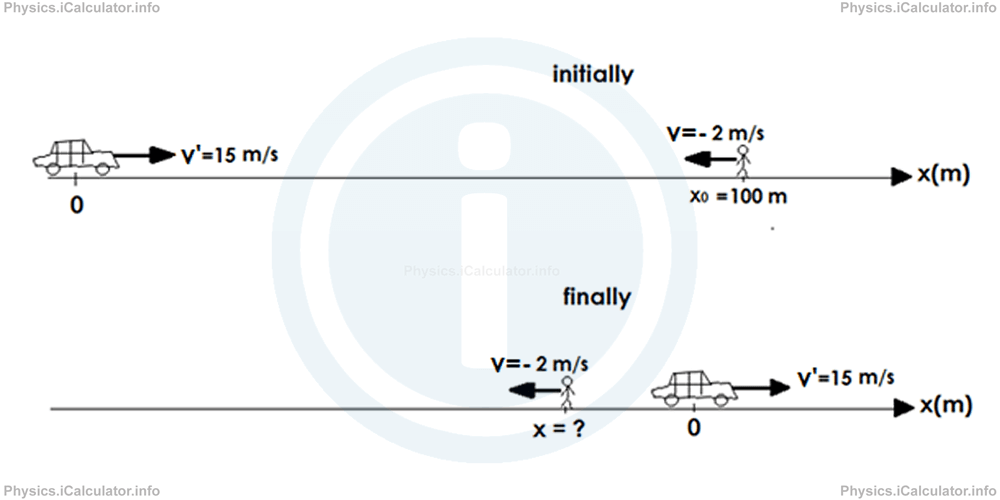Menu
Physics Lesson 3.13.4 - Case 3 - Reference frame is moving at constant velocity and the object is moving at constant velocity
Please provide a rating, it takes seconds and helps us to keep this resource free for all to use
Welcome to our Physics lesson on Case 3 - Reference frame is moving at constant velocity and the object is moving at constant velocity, this is the fourth lesson of our suite of physics lessons covering the topic of Relative Motion, you can find links to the other lessons within this tutorial and access additional physics learning resources below this lesson.
Case 3 - Reference frame is moving at constant velocity v⃗' and the object is moving at constant velocity v⃗
This is the case when two cars for example are moving either in the same or in the opposite direction. One of the cars is taken as a reference frame (for example the car in which we are inside) and the other car is considered as an object moving in respect to the first car. Once again, we use the equation (2) we discussed earlier
to find the position of the second object in respect to the first object (the reference frame).
Again, let's illustrate this point with a numerical example for a better understanding.
Example 2
A car is moving due East at 15 m/s. A pedestrian who is initially 100 m in front of the car is walking at 2 m/s due West. What is the position of the pedestrian in respect to the car after 8s?
Solution 2
East is taken as positive direction and West as negative. Given this, we have the following clues:
v⃗' = 15 m/s
v⃗ = -2 m/s
t = 8s
x⃗ = ?
Using the equation (2),
we obtain after the substitutions
= 100m - 16m - 120m
= -36m
This result means the man will be 36 m on the West (behind) the car after 8 seconds. Look at the figure:

You have reach the end of Physics lesson 3.13.4 Case 3 - Reference frame is moving at constant velocity and the object is moving at constant velocity. There are 7 lessons in this physics tutorial covering Relative Motion, you can access all the lessons from this tutorial below.
More Relative Motion Lessons and Learning Resources
Whats next?
Enjoy the "Case 3 - Reference frame is moving at constant velocity and the object is moving at constant velocity" physics lesson? People who liked the "Relative Motion lesson found the following resources useful:
- Case Three Feedback. Helps other - Leave a rating for this case three (see below)
- Kinematics Physics tutorial: Relative Motion. Read the Relative Motion physics tutorial and build your physics knowledge of Kinematics
- Kinematics Revision Notes: Relative Motion. Print the notes so you can revise the key points covered in the physics tutorial for Relative Motion
- Kinematics Practice Questions: Relative Motion. Test and improve your knowledge of Relative Motion with example questins and answers
- Check your calculations for Kinematics questions with our excellent Kinematics calculators which contain full equations and calculations clearly displayed line by line. See the Kinematics Calculators by iCalculator™ below.
- Continuing learning kinematics - read our next physics tutorial: Motion. Types of Motion
Help others Learning Physics just like you
Please provide a rating, it takes seconds and helps us to keep this resource free for all to use
We hope you found this Physics lesson "Relative Motion" useful. If you did it would be great if you could spare the time to rate this physics lesson (simply click on the number of stars that match your assessment of this physics learning aide) and/or share on social media, this helps us identify popular tutorials and calculators and expand our free learning resources to support our users around the world have free access to expand their knowledge of physics and other disciplines.